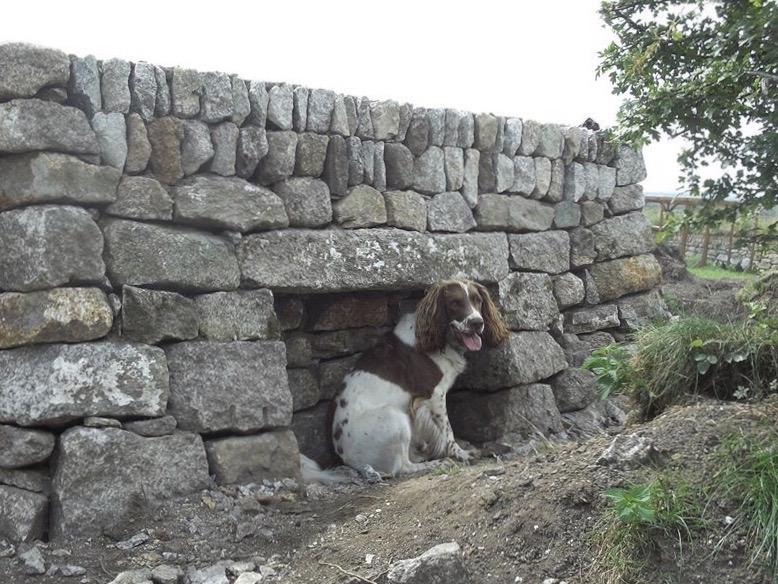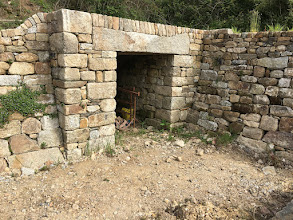
Andrew Cockshaw is CREST’s Training Development Officer and leads many of CREST’s Cornish hedging courses, especially the Intermediate training.
With over 20 years of experience as a full-time professional hedger, Andrew is especially interested in encouraging high standards of craftsmanship, aesthetics and creativity in the craft. In this article, Andrew shares with us his fascination with the diversity of Cornish hedging.
Left: Andrew Cockshaw with one of his professional projects (2024), a retaining hedge up to 8ft, made from granite excavated from the site.
“I do love hedging. (Who doesn’t?) Part of that love comes from being a part of a long tradition of hedge builders reaching back into the mists of time, keeping alive a tradition that will potentially outlive us all. But I also love being creative, using the ancient stones of Cornwall to create new and interesting forms and structures.
The traditional heritage features of our Cornish Hedges are a great place to let your hair down and start playing around creatively, whilst still keeping a solid grounding in deep rooted tradition. They can also be a balm to the spirit, when set within the many untold metres of more uniform hedging that are part of a new build, repair or renovation.
Throughout my career I’ve always embraced the opportunity to build these features for my customers, even suggested building a few to them myself on occasion. From the functional features such as sheep creeps and dog kennels, stiles and even a curved granite staircase, to more modern takes on benches built into hedges, all of these things have pushed me as a craftsperson, improving my skill and knowledge base and challenging me to experiment with the traditional forms and techniques that are so uniquely Cornish Hedging.”

“Perhaps the most fun I had building such a feature was the one that ended up being effectively a 5’ x5’ x5’ “room” recessed into a retaining hedge, complete with granite lintels for a roof. My customer wanted me to build something ‘interesting’; ‘what exactly do you require’, I asked. ‘I’m not too sure’, he replied; thus quoins were hand-dressed, batters were observed, earth was dug out with pick and shovel and slowly the “room’ emerged, and is now a part of the landscape where it remains. Maybe in 1,000 years time, people will speculate as to who built and lived in such a grand cave…”

During my time working and teaching Cornish Hedging with CREST, I’ve had the pleasure to work with trainees building stiles (cattle stiles and sheep stiles so far!) into hedges as part of training. We plan to do more of this in the future, as it is not only great training, making you think about applying all of your previous learning in different ways, but it is also a lot of fun to work on these projects together, sharing ideas and working methods!
(Watch this space, as the answer to the question “What do you get if you cross a Cornish Hedge with a Moongate” is slowly beginning to make its way from out of my brain and into my granite stash Down West.)” – Andrew Cockshaw
For more information about traditional features in Cornish hedges, make sure you check out the Cornish hedges library, where there is a wealth of information about the history, ecology and styles of Cornish hedging.
To learn the skills required to build both heritage and creative features in a hedge, check out our upcoming enhanced skills courses:
